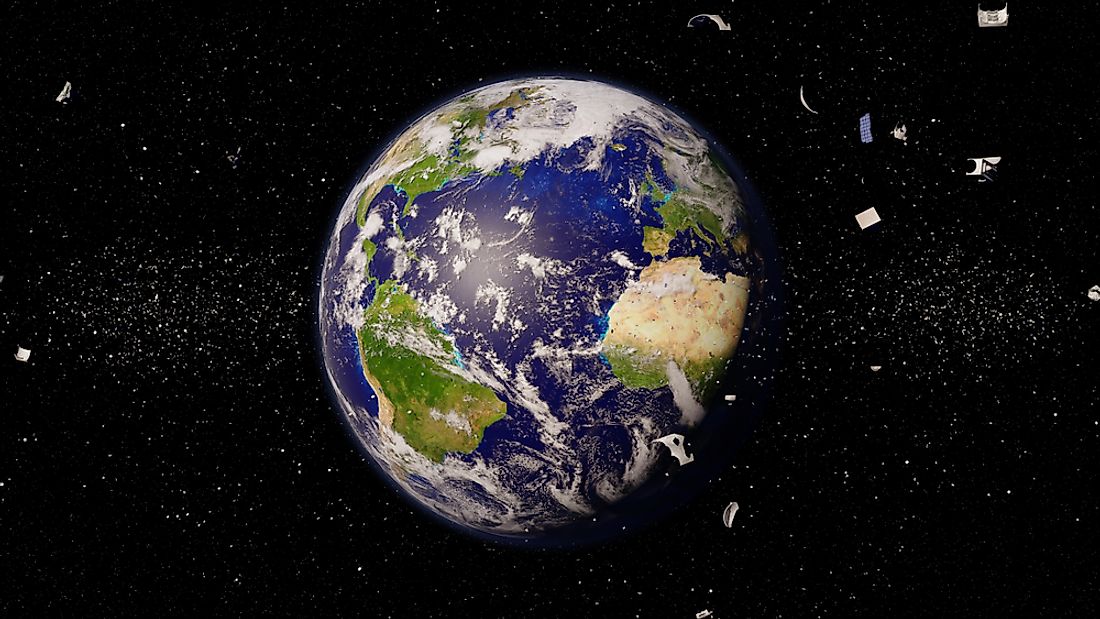What Is Space Junk? Space Junk Definition

Space junk, also called orbital debris or space trash, is a collection of objects made by humans that are in orbit in space. A huge number of these objects were part of humanity's expeditions into space, and some are bits and pieces of material formed when human-made objects collide with other solar objects. These materials range in size, from some as small as 0.4 inches to some as big as 4 inches and there are estimated to be as many as 170 million objects in space. Often space junk takes the form of broken rockets and satellites, as well as bits of metal.
The Earth’s Orbit
The earth’s orbit is separated into three different regions. The Low Earth Orbit (LEO) covers a distance of between 125 and 1,250 miles from the earth. Pieces of junk in this area are affected by the earth’s atmosphere, which change their orbit and drag them back to the earth. The communication and navigational satellites are in the semi-synchronous orbit which is between 6,000 and 12,000 miles above the earth. The telecommunication and weather satellites are in geosynchronous earth orbit, which is more than 22,000 miles above the earth surface
Kessler Syndrome
Space junk exists in different areas of the orbit, some further away from the earth and some nearer. Those that are at least 1200 miles from the earth are light particles, highly likely to be dust, coolants, or the paint peeling off from the space shuttles and satellites. In the Low Earth Orbit (LEO) objects move at high speeds of up to 4 miles per second. At such staggering speeds, a tiny fleck of paint could deliver a punch similar to 550 pound object moving at 60 miles per hour. Such tiny specks in space can impact damage to useful satellites and their components (such as pressurized tanks). As more and more activity goes on in the outer space, an increasing amount of debris is being left into the orbit. This chain reaction is called the Kessler syndrome. The particles collide along the path of orbit creating more debris which if unchecked, will continue to cause more harm to the satellites and rockets. For instance, in 1996 a French satellite was damaged when it collided with debris from a French rocket which had exploded a decade earlier. In 2009, a US Iridium commercial satellite was damaged when it collided with the defunct Russian satellite. Similarly, in 2007 China’s anti-satellite test that used a missile to destroy an old weather satellite, created more than 3,000 pieces of debris in the space.
Reducing Space Junk
In the recent past different space exploration organization like NASA have worked with the aim of reducing the amount of space junks added to the Earth’s orbit, through implementation of better designs. Japan, China, France, Russia, and European Space Agency have issued guidelines on ways to cut back on orbital debris. Cleaning the already existing debris in the orbit is the biggest challenge because of the high financial cost. A proposal of using laser to give a path-shifting push that would not damage the object is seen as feasible.











